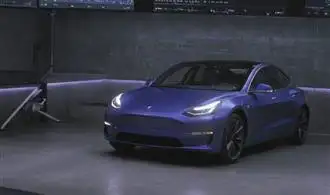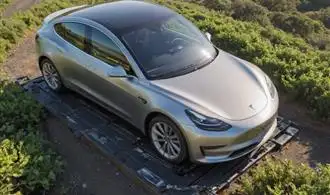
Battery Degradation
One of the common issues Tesla Model 3 owners face is battery degradation. As the vehicle's battery ages, it can experience a gradual decline in its capacity, reducing the car's overall range and performance. This phenomenon is not unique to Tesla vehicles, but it is an important concern for any electric car owner to be aware of.
The rate of battery degradation can vary depending on several factors, including the climate, driving conditions, charging habits, and the car's overall usage. In warmer climates, for example, the battery may degrade faster due to the increased heat stress. Similarly, frequent high-speed driving and rapid charging can also contribute to accelerated battery degradation.
- Charge the vehicle to a moderate level (80-90%) for daily use, and only charge to 100% when necessary for longer trips. Overcharging the battery can increase degradation.
- Avoid exposing the battery to extreme temperatures, such as leaving the car parked in direct sunlight for extended periods. This can put additional strain on the battery and accelerate degradation.
- Consider using a lower-power charging option, such as a Level 2 charger, instead of relying on rapid charging (Supercharging) for every charge cycle. Rapid charging can stress the battery more over time.
- Monitor the battery's health using the Tesla mobile app or the vehicle's on-board diagnostics. This can help owners identify any significant degradation and take appropriate actions.
- If the battery degradation becomes excessive, Tesla may offer battery replacement or repair options, depending on the vehicle's warranty coverage and the specific circumstances.
Excessive Tire Wear
One of the common problems faced by Tesla Model 3 owners is the issue of excessive tire wear. This can be a frustrating and costly problem, but understanding the underlying causes and implementing the right solutions can help mitigate the issue. In this article, we'll dive deep into the factors contributing to excessive tire wear on the Tesla Model 3 and provide practical steps to address and prevent this problem.
The Tesla Model 3's unique powertrain and aggressive acceleration can place significant demands on the tires, leading to faster wear and tear. Additionally, the car's heavy weight and precise handling characteristics can exacerbate the issue. Factors such as driving style, road conditions, and improper tire maintenance can also contribute to the problem.
- Tire Rotation and Balancing: Regularly rotating and balancing your tires can help ensure even wear across all four wheels. This simple maintenance task can significantly extend the life of your tires.
- Proper Tire Pressure: Maintaining the recommended tire pressure is crucial for optimal performance and tire life. Refer to your owner's manual or the information label inside the driver's side door jamb to ensure your tires are inflated to the appropriate PSI.
- Wheel Alignment: Misaligned wheels can lead to uneven tire wear. Have your Tesla Model 3's wheel alignment checked and adjusted by a qualified technician to ensure the wheels are properly aligned.
- Driving Style Adjustments: Aggressive acceleration, high-speed cornering, and sudden braking can all contribute to faster tire wear. Try to adopt a smoother, more conservative driving style to reduce the strain on your tires.
- Tire Selection: Consider upgrading to high-performance, low-rolling resistance tires designed to handle the demands of the Tesla Model 3. These tires may be more expensive, but they can offer improved longevity and performance.
- Preventive Maintenance: Regular inspections and proactive tire maintenance, such as checking for wear and damage, can help identify issues early and extend the life of your tires.
Infotainment System Glitches
The Tesla Model 3's infotainment system is a complex and feature-rich interface that can sometimes experience glitches or software-related issues. These problems can range from minor annoyances to more severe disruptions in the vehicle's functionality. It's important to understand the common infotainment system problems and how to troubleshoot and resolve them effectively.
One of the most frequently reported issues is a frozen or unresponsive touchscreen. This can happen due to a software bug, a temporary glitch, or even a hardware problem. In such cases, the first step is to try a simple reboot of the system. This can be done by pressing and holding the two scroll wheels on the steering wheel for about 10 seconds until the screen goes black and then reboots. If the issue persists, it's recommended to contact Tesla's customer support for further assistance, as the problem may require a more in-depth diagnosis or a software update.
Another common problem is the intermittent loss of connectivity between the infotainment system and other vehicle systems. This can result in features like navigation, music playback, or climate control not functioning as expected. In some instances, the system may even display error messages or simply revert to a default state. To address this, owners can try resetting the system's network connections by going to the settings menu and selecting the "Reset Network" option. If the problem continues, it's advisable to schedule a service appointment with Tesla to have the system thoroughly checked and potentially repaired or updated.
Some Tesla Model 3 owners have also reported issues with the voice recognition system, where voice commands fail to work or the system fails to properly interpret the user's instructions. This can be frustrating, especially when trying to control various vehicle functions hands-free. To troubleshoot this, owners can try recalibrating the voice recognition system by going to the settings menu and following the on-screen instructions. If the issue persists, it's recommended to contact Tesla support, as the problem may require a software update or a more complex repair.
In rare cases, Tesla Model 3 owners have experienced complete system failures, where the infotainment system becomes unresponsive and the vehicle's core functions are affected. This can be a significant problem, as the infotainment system is integral to the Model 3's operation. If this occurs, the best course of action is to immediately contact Tesla's customer support and schedule a service appointment. The company's technicians will be able to diagnose the issue and provide a solution, whether it's a software update, a hardware replacement, or a more comprehensive repair.
Paint and Trim Issues
The Tesla Model 3 is known for its sleek and minimalist design, but this can also make it susceptible to paint and trim issues. One common problem is the "orange peel" effect, where the car's paint finish appears uneven and textured. This can be caused by a variety of factors, including improper spraying techniques, environmental conditions during the painting process, or even the type of paint used. To address this issue, owners can consider having the car's paint professionally polished or even resprayed by a reputable auto body shop.
Another common problem is peeling or chipping paint, particularly on the car's trim pieces. This can be due to a number of factors, such as exposure to harsh weather conditions, road debris, or even improper cleaning techniques. To prevent this, owners should be careful when cleaning the car, avoiding harsh chemicals or abrasive materials that could further damage the paint. Additionally, regular touch-up paint applications or clear bra installations can help protect the car's finish from future damage.
Alignment and fitment issues with the car's trim pieces can also be a source of frustration for Tesla Model 3 owners. This can include gaps between the body panels, uneven door alignments, or trim pieces that don't quite fit flush with the car's surface. While some of these issues may be more difficult to address, owners can consult with a reputable Tesla repair shop or even the manufacturer for guidance on how to properly adjust or replace any troublesome trim components.
















